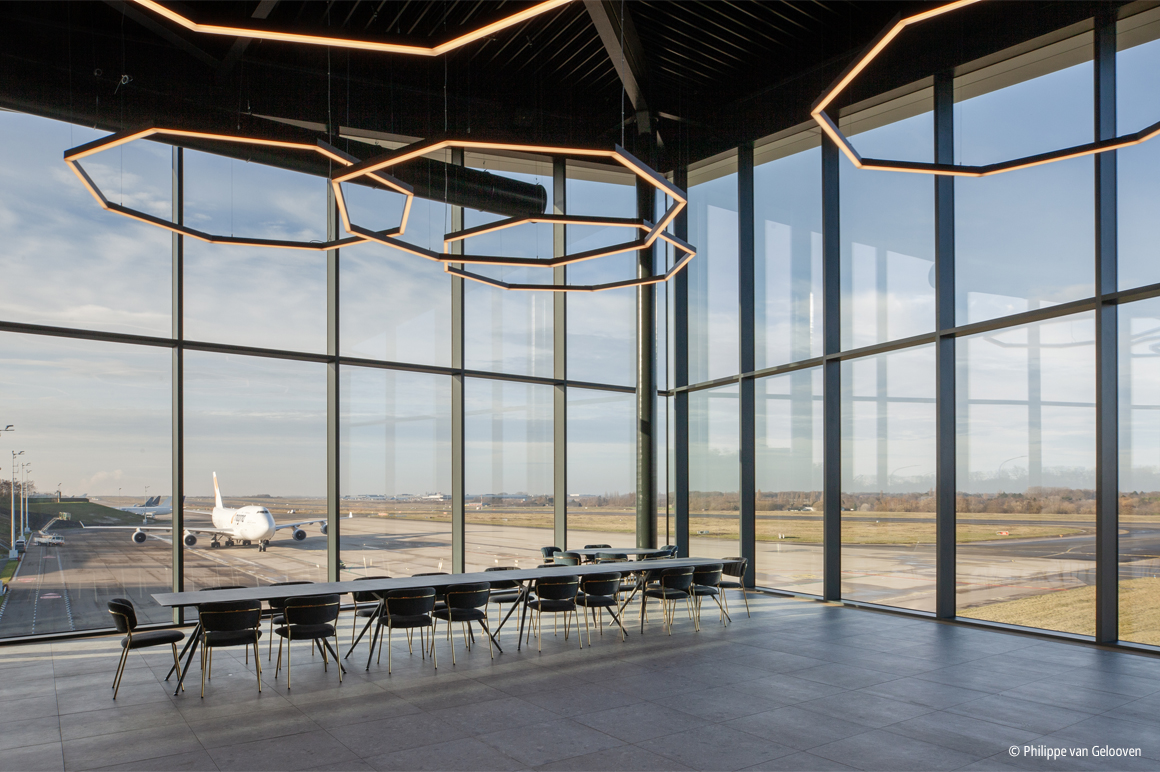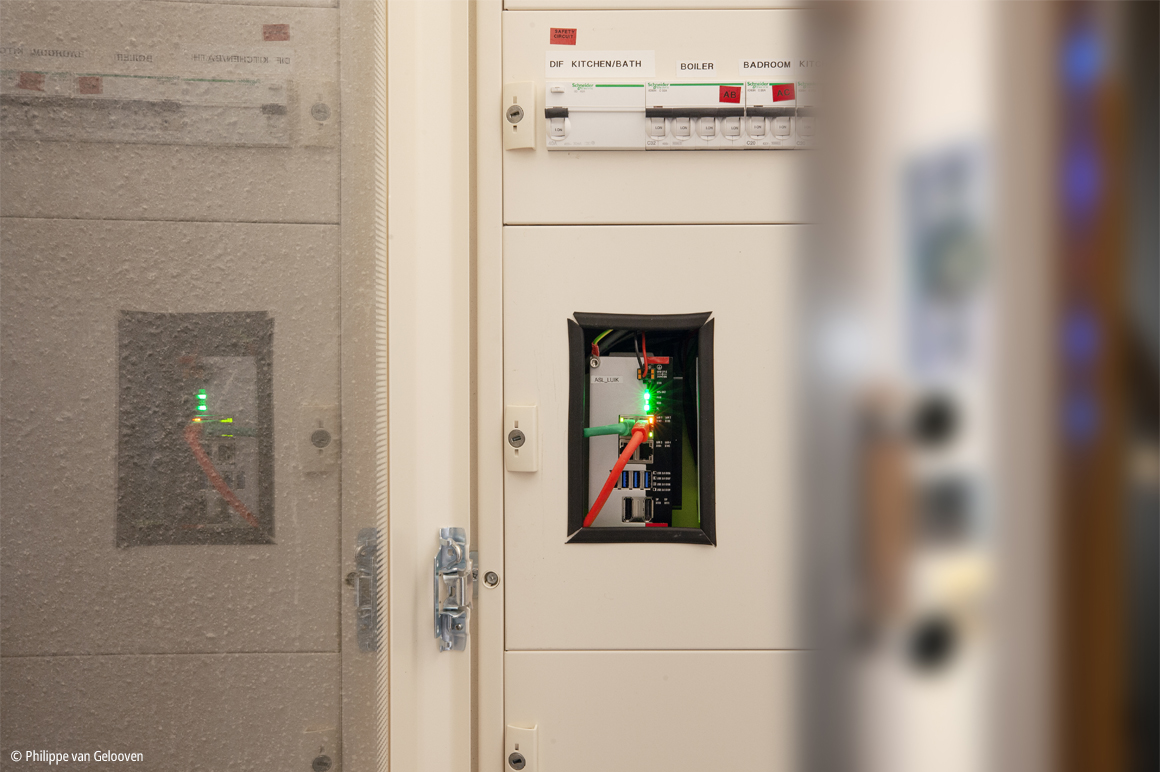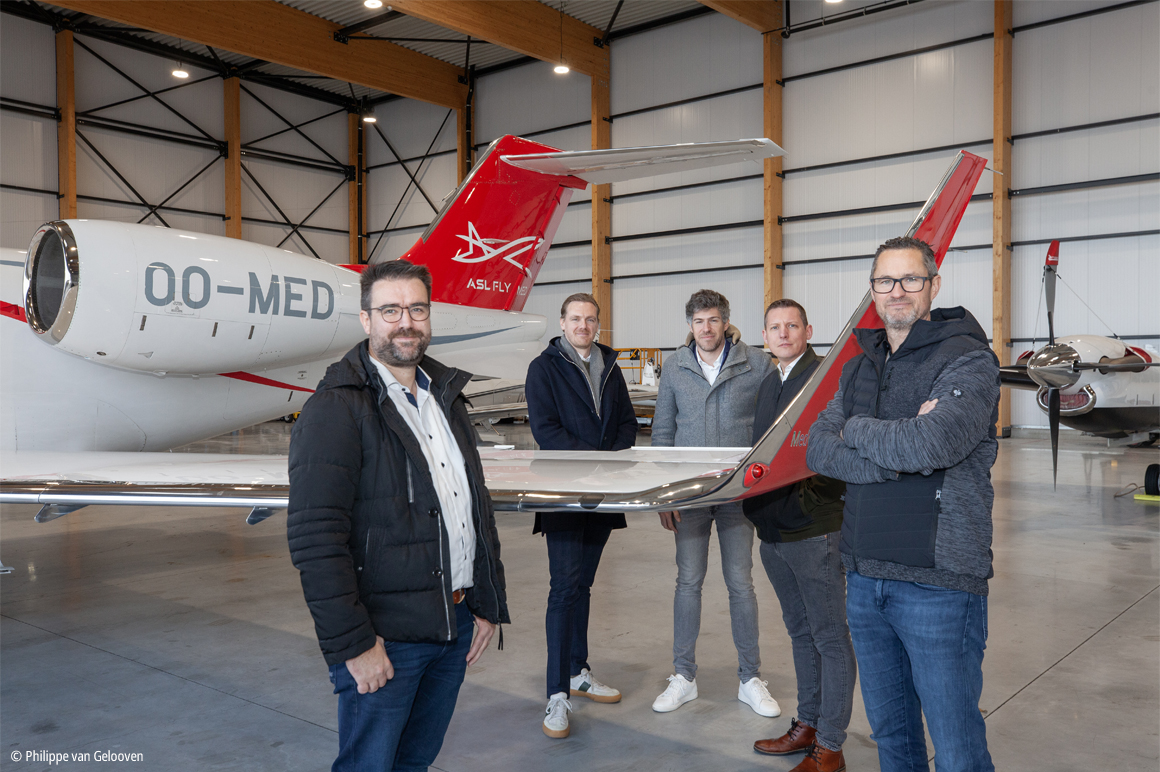

Building automation enables autonomous operation of an airport terminal
Is a fully autonomous building mere science fiction? No, it is already a reality, as the Belgian ASL Group in Liège is proving with a state-of-the-art, 24/7 terminal for private flight operations. Beckhoff Solution Provider Boolean BV supported the implementation of this with end-to-end building automation.

Raf Weerts, facility manager at the ASL Group, explains: “We only have one permanent employee here. The other staff are freelancers who only work when an aircraft arrives or departs. To ensure that they don’t have to spend a lot of time powering up all the technology, the building starts everything automatically when an employee enters. As soon as no more movement is detected in the building, all systems – ventilation, lighting, heating, etc. – automatically switch back to sleep mode. This enables us to work in a very energy-efficient manner. In our energy-intensive industry in particular, we try to prioritize sustainability wherever possible.”
Seamless integration for autonomous operation
The state-of-the-art building is the result of a tender by Liège Airport itself. The latter was looking for a partner to build and operate a new general aviation terminal. “And we were looking for an operations base in this region, so it was a perfect match,” recalls Weerts. With 900 m2 of office space and a 2,250 m2 aircraft hangar, the building also offers state-of-the-art architecture. Inside, a large lounge can accommodate groups of up to 35 people, while a small, intimate lounge has space for three to four people. “It definitely has a certain charm,” laughs Weerts, “but the real power lies within. The autonomous operation that we have achieved through the seamless integration of all technologies is amazing.”
The ASL Group was not alone in this project. Through previous professional collaborations, Raf Weerts already knew owner Chris Briers and partner Thomas Nagels from Beckhoff Solution Provider Boolean and was aware of their extensive experience in implementing such a demanding project. “We were on the same wavelength right from the start. Beckhoff technology had to be the backbone of this entire system. Ultimately, open control technology is essential in order to bring together all the different signals and protocols.” The KL4408 and KL6821 (DALI-2) Bus Terminals and the EL2809 EtherCAT Terminals as well as the TwinCAT Modbus TCP, Modbus RTU, and SMS/SMTP functions are used for this purpose.

The TwinCAT 3 controller coordinates the entire HVAC technology – from lighting, electricity, and charging stations through to the audio system. “Only access control remains in the hands of the airport. With any other automation platform, this would have required many more interfaces and much more integration effort. With PC-based control from Beckhoff, however, the openness and connectivity we need are already integrated into the system,” explains Chris Briers.
The biggest challenge for the Boolean team was to implement the high level of usability required by the ASL Group. “Raf Weerts had a very clear idea of what a technical installation should look like; a vision of how the building should function. Turning this into a flowchart gave us a guideline that we could work with and use to program the software accordingly,” says Thomas Nagels. According to him, it was also crucial that sufficient flexibility was provided: “We also wanted to incorporate feedback from end users and be able to integrate new technologies or try out new things in the future – a living laboratory, so to speak.” For Raf Weerts, the powerful monitoring visualized with TwinCAT 3 HMI is also important: “If something isn’t going quite according to plan, I can easily log in, identify the problem, and solve it myself from my keyboard or explain what needs to be done to the people on site.”
Proprietary platform with IPC and TwinCAT core
Boolytics, Boolean’s proprietary platform, was vital in this project, as Thomas Nagels explains: “We can record and log real-time data on this platform. The use of a web dashboard visualizes the process very well with TwinCAT 3 HMI and provides the information on all data points in a clear overview. This tool also offers enough flexibility to strike the right balance between a high level of usability for the customer and the ability to go deep enough into the analysis.” Raf Weerts clarifies his specifications as follows: “Everything is monitored in such a way that I have usually already called before the employees on site even detect there is a problem. For example, if the heating isn’t working properly, I can take immediate action before the building cools down.”

The heart of the entire control system is the C6030 ultra-compact Industrial PC from Beckhoff. It receives most of the data via bus systems or IP communication, collects it in the TwinCAT software, and transfers it to Boolytics. “Transparency on both sides is what makes Beckhoff the right technology partner,” summarizes Chris Briers. And that doesn’t just mean in Liège – because the responsible facility manager, Raf Weerts is pushing to equip all buildings with Beckhoff technology: “Not every building has the same technology, but you can still standardize operations and always use the same structure. This is much more convenient for the end user and means that more options are available for sharing energy, for example. By having the PLCs for the different locations communicate with each other, it’s easy to see when it’s the best time to switch on the large energy consumers.”
2030 building standards already implemented today
In terms of its overall energy performance, the building is ahead of its time. Raf Weerts explains: “In terms of insulation, glazing, etc., we have followed the 2030 standards. After all, you can only insulate once. So you have to do it right. A VRF (Variable Refrigerant Flow) heat pump with an output of 32 kW can now keep the entire office building at the right temperature. We also don’t need a room temperature of 23 °C. Guests who come here only have to spend five to ten minutes in the building and can keep their coats on, for example. Yet consideration has been given to ensure that employees also make themselves comfortable – if necessary, the room temperature can be quickly increased using a boost button.”

Boolean’s programming work has paid off, particularly in terms of energy efficiency, as Chris Briers explains: “We have really immersed ourselves in this subject. The manufacturers’ conventional configurations have all been revised. Everything has been set and parameterized internally.” Thomas Nagels adds: “With this building, we have clear proof that our operation is more economical, because we carry out very extensive monitoring – including via Beckhoff Control Panels. We even keep an eye on the intermediate steps in the arrangements. This allows us to see exactly where the process can be optimized further.” Experiments have already been carried out on the heating curve settings to see what effects adjusting the parameters has, how the end result is affected, and whether the effort involved in making the changes is worthwhile.
As a Beckhoff Solution Provider, Boolean required very little support. Nevertheless, Chris Briers makes special mention of the support provided by the automation specialist. “The experts from Beckhoff Belgium are very responsive and are always easy to reach if necessary. The longer you work with PC-based control, the less support you need. However, the support team is on hand if required and also suggests new technologies and products. In our view, it is particularly important that Beckhoff technology also offers a high level of stability despite all the innovations. Spare parts are still available for solutions that were installed more than a decade ago. This is robust, industrial-grade technology – I could use the same IPC that controls the building management here to also control a sophisticated production process. So there is no shortage of computing power and therefore no limit to what we can achieve with this building in the long term.”